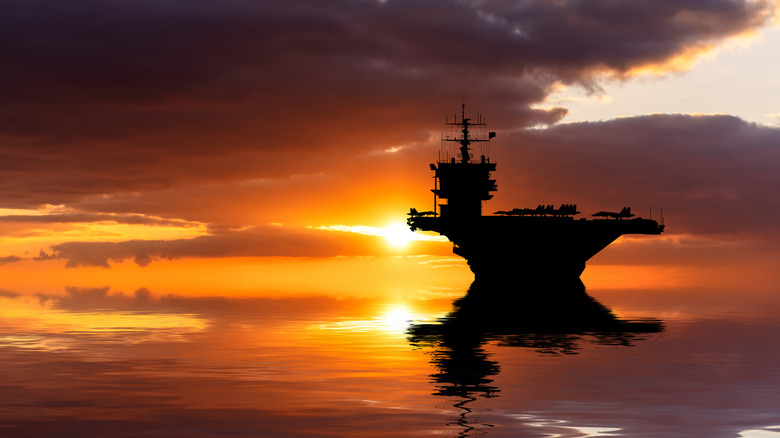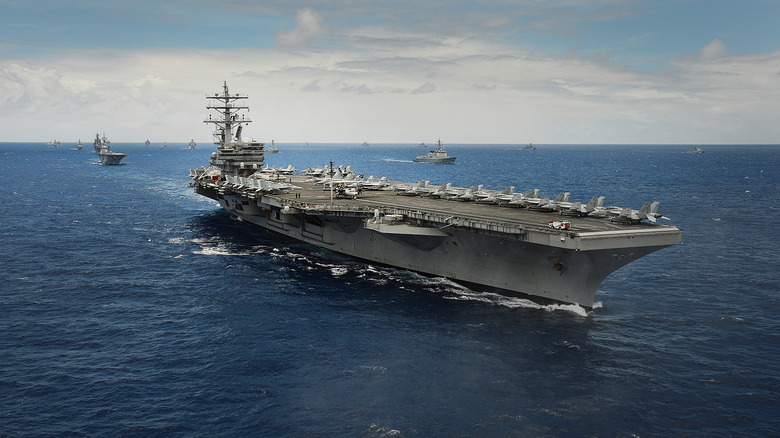
Anton Petrus/Getty Images
The aircraft carriers in the U.S. Navy are huge vessels, equivalent of a roaming city at sea. More than that, they’re mobile airfields. They carry aircraft, as the name suggests, and personnel with a variety of jobs, sailing to a wide range of areas at every corner of the globe. What do carriers do? They most commonly launch jets, planes, and helicopters from a flight deck. The Nimitz and newest Gerald R. Ford-class carriers can launch up to 125 strike sorties in a single day. But not every aircraft leaving the carrier is on an attack mission. They fulfill their fair share of recon and humanitarian missions, as well.
Advertisement
When a tsunami ripped through Southeast Asia in 2004, the USS Abraham Lincoln (CVN-72) and its carrier strike group provided medical and engineering support as well as debris removal. Carriers sail with a Carrier Strike Group (CSG) in a designated area of operation as part of a fleet, of which there are seven. A CSG consists of the carrier with its air wing, a guided-missile cruiser, some destroyers, and a supply ship. When a strike mission is necessary, the attached air wing can fly against other aircraft, sea-borne vessels, and land targets. Besides having planes at sea, though, why do we need aircraft carriers? And why does the U.S. military need 11 of them?
Why are aircraft carriers important?

Michaelbwatkins/Getty Images
Carriers may as many as 6,500 men and women working aboard. Not to mention there are roughly 90 airplanes and helicopters ready for deployment at a moments notice. The sheer capacity allows carriers, along with the rest of a carrier group if necessary, to provide disaster relief and security for allies all around the globe. When America wants an airbase in another country, there are negotiations can take months if not years to settle. That’s not the case for aircraft carriers, which can go just about anywhere there’s water.
Advertisement
As long as they remain within international waters, the U.S. has this sovereign territory within arm’s reach of most nations. A carrier’s presence alone can serve as a diplomatic move that neutralizes a pending threat. They can also serve as a way to strengthen alliances when a land-bound base could raise foreign relations concerns. For example, there are instances in which one nation may welcome the idea of America building a base within their borders, but a neighboring nation is not amenable to having U.S. forces so close by.
When Bill Clinton was the President of the United States in 1993, he visited the USS Theodore Roosevelt (CVN-71) in Norfolk, Virginia, and said, «When word of crisis breaks out in Washington, it’s no accident the first question that comes to everyone’s lips is; where is the nearest carrier?»
Advertisement